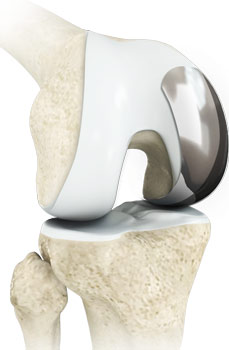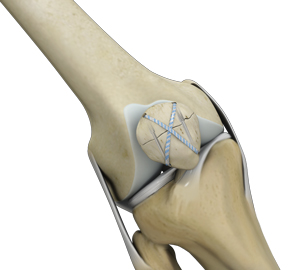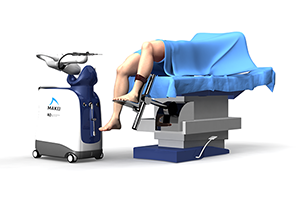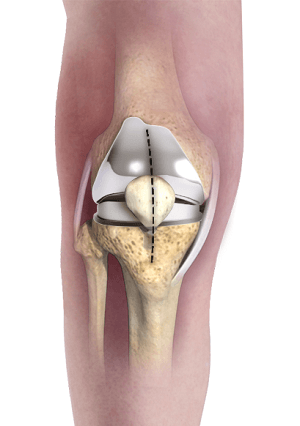-
Total Knee Replacement

Total knee replacement, also called total knee arthroplasty, is a surgical procedure in which the worn out or damaged surfaces of the knee joint are removed and replaced with an artificial prosthesis.
-
Partial Knee Replacement

Unicompartmental knee replacement is a minimally invasive surgery in which only the damaged compartment of the knee is replaced with an implant. It is also called a partial knee replacement.
-
Knee Fracture Surgery

Knee fracture surgery is a surgical procedure performed to correct the cracked or broken bones in or around the knee to restore normal anatomical function, stability, and motion.
-
Robotic Assisted Knee Replacement

Robotic-assisted knee replacement surgery is an alternative to the conventional knee replacement procedure. It is performed using robotic-arm technology that allows your surgeon to precisely perform the surgery through a smaller incision as compared to traditional surgery.
-
Gender-Specific Knee Replacement

Gender-specific knee replacement, also known as woman’s knee replacement, is a surgical procedure in which gender-specific knee implants specifically designed for a male or female are used for total knee replacement surgery. The prosthesis is designed in such a way that it matches the specific knee anatomy of the male or female gender, as universal knee replacement implants may not be suitable for all men or women due to anatomical differences.
-
Minimally Invasive Knee Joint Replacement

Total knee replacement is a very successful surgical treatment for knee arthritis. Over the years, minimally invasive knee replacement surgical techniques have been developed to lessen tissue trauma and improve patient outcomes. This minimally invasive approach involves much smaller incisions than the usual 10-12 inch incisions used in the traditional knee replacement and spares the quadriceps muscle and tendon, which control bending of the knee, from being cut to access the knee joint.
